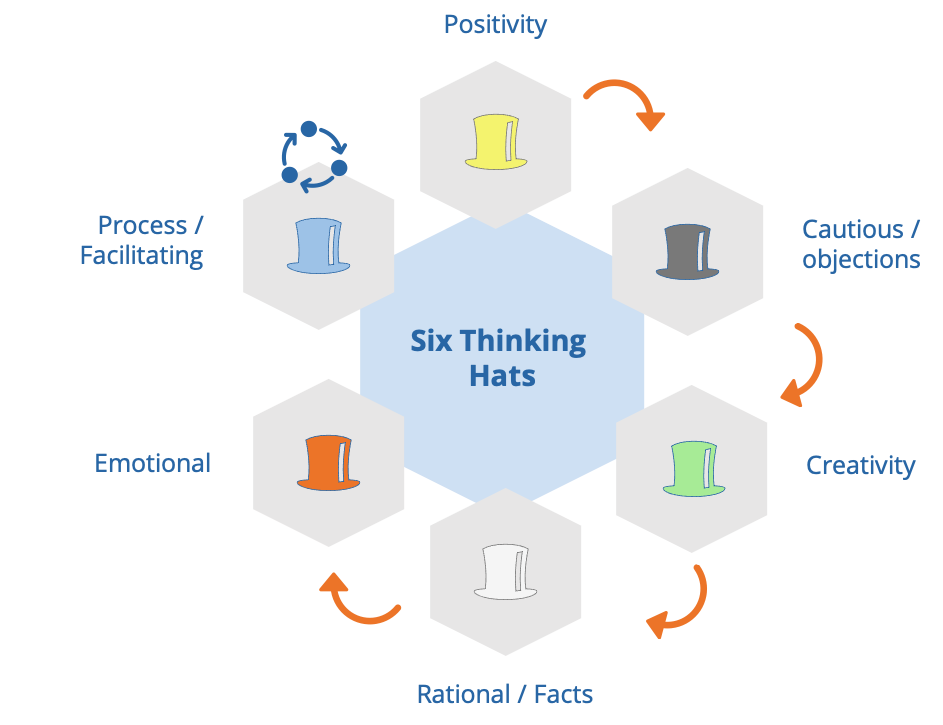
Six Thinking Hats Method
Procedure for the Six Thinking Hats method
- They usually start with a positive view of your desired solution, project, or plan. You record the benefit first (yellow hat). If necessary, already select topics for rational review (white hat). Or remember topics for which a creative view (green hat) is required.
- The next step is to switch perspectives to identify the negative aspects or objections (black hat). Again, you can have tasks for the “white hat” or “green hat” point of view.
- After you’ve grasped the pros and cons, get creative. This is how you improve solutions and address the negative arguments (black hat).
- The white hat supports previous findings with facts and figures.
- For a final evaluation, the emotional gut feeling of the red hat is used.
Description
The Six Thinking Hats method helps you to take different perspectives. This increases the support for your decisions. You evaluate a possible decision based on six directions, each of which is marked by a colored hat. The perspectives are Positive Thinking (Yellow Hat), Creativity (Green Hat), Emotions (Red Hat), Rational Assessment (White Hat), Admonition/Caution (Black Hat), Control/Process (Blue Hat).
The method was developed by Edward de Bono.
Thematic classification
The Six Thinking Hats method helps to make and evaluate decisions.
Who benefits from this method?
- Organizations
- Companies
- Teams
- Agile units
- Projects
Practical tips
- Using Six Thinking Hats in a team allows you to…
- … assign the hats (perspectives) to different team members
- … or to put the entire team in the respective perspective one after the other.
- The blue hat coordinates the different perspectives and is perceived by the moderator.
- Changing perspectives several times during the session is not uncommon.
- You can add new arguments at any time.
Limits of Application
The Six Thinking Haste method requires a strong role for the facilitator. Especially if it is conducted as an online session. Discipline in processing is required from team members.

